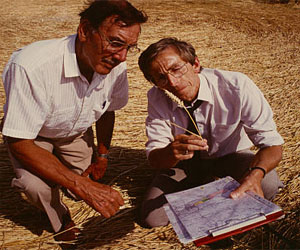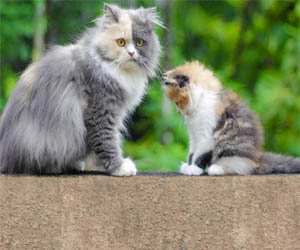


The Enduring Debate

Believers and skeptics have long been engaged in a complex and often passionate debate across a wide range of subjects, from religion and the paranormal to scientific theories and historical events. This dynamic interplay between those who accept claims and those who scrutinize them is a fundamental part of human discourse and critical thinking.
One of the most prominent arenas where this debate takes place is in the realm of the paranormal and the supernatural. Believers in paranormal phenomena such as ghosts, UFOs, and psychic abilities assert that there is unexplained and mystical activity in the world. They often rely on anecdotal evidence, personal experiences, and the testimony of others to support their claims. Skeptics, on the other hand, demand empirical evidence, scientific scrutiny, and rigorous investigation before accepting such assertions. The believers-skeptic debate in this context often comes down to a fundamental difference in the burden of proof, with skeptics maintaining that extraordinary claims require extraordinary evidence.
In the sphere of religion, the debate between believers and skeptics has been a cornerstone of human history. It extends beyond individual beliefs to encompass entire religious systems and worldviews. While believers find spiritual fulfillment, moral guidance, and a sense of purpose in their faith, skeptics raise questions about religious dogma, contradictions in holy texts, and the lack of empirical evidence for the existence of deities. The existence of God, the nature of the afterlife, and the validity of religious doctrines are recurring points of contention.
Scientific theories and discoveries are another arena for believers and skeptics to engage in debate. For example, the theory of evolution has faced skepticism from religious fundamentalists who hold creationist beliefs. Believers in scientific theories often cite the rigorous evidence and consensus among experts as their basis for accepting these ideas, while skeptics may challenge the evidence, methodology, or interpretation of data. The debate between believers and skeptics in science highlights the tension between empirical evidence and pre-existing beliefs.
Historical events and conspiracy theories are also subjects of intense debate. While mainstream historians rely on documented evidence and scholarly consensus, believers in alternative historical narratives, such as moon landing deniers or Holocaust revisionists, challenge the accepted accounts. Skeptics often emphasize the importance of critical analysis and the risk of misinterpreting or selectively presenting historical facts.
The believers and skeptics debate is not just a matter of personal preference; it has significant implications for society, culture, and even public policy. These debates can shape public perceptions and influence decisions on issues like education, health, and environmental policy.
The believers and skeptics debate is a fundamental aspect of human thought and discourse. It underscores the importance of critical thinking, the scientific method, and empirical evidence in evaluating claims. While beliefs and skepticism can coexist, the tension between the two perspectives serves as a catalyst for the advancement of knowledge and the pursuit of truth. It is a reminder that our understanding of the world is a constant work in progress, shaped by the ongoing dialogue between those who seek to explore the unknown and those who demand a rigorous basis for belief.






Decrypting The Language Of The Fields
 Geometry And Sacred Symbols
Geometry And Sacred Symbols
Crop circles often feature complex geometric shapes and patterns. Some of the most common elements in these formations include circles, triangles, spirals, and fractals, all of which hold significant symbolism in various cultures and belief systems. These patterns have been associated with concepts like unity, balance, and the infinite nature of the universe.
Deciphering The Enigma
 Deciphering Nostradamus' cryptic language often involves attempting to find connections between his quatrains and historical events. Believers argue that his predictions have accurately foretold significant occurrences, while skeptics assert that the vague and flexible nature of his language allows for post-event retrofitting. This post-event retrofitting is a process in which quatrains are interpreted in a way that aligns with past events, but it is a subjective exercise that can yield different results based on the interpreter's perspective.
Deciphering Nostradamus' cryptic language often involves attempting to find connections between his quatrains and historical events. Believers argue that his predictions have accurately foretold significant occurrences, while skeptics assert that the vague and flexible nature of his language allows for post-event retrofitting. This post-event retrofitting is a process in which quatrains are interpreted in a way that aligns with past events, but it is a subjective exercise that can yield different results based on the interpreter's perspective.
Some interpretive strategies include looking for numerological patterns, anagrams, and hidden meanings within the text. Believers often point to specific quatrains that they argue are validated by historical events, such as the French Revolution or the rise of Adolf Hitler. However, skeptics claim that this can be a form of cherry-picking, where only those quatrains that seem to align with history are emphasized, while the majority that do not are ignored.
Moreover, Nostradamus' quatrains are subject to translations, which can further complicate the process of deciphering his cryptic language. Translations may vary in their interpretations of the original French verses, leading to different outcomes when attempting to match them with historical or contemporary events.
One challenging aspect of deciphering Nostradamus' quatrains is the time lag between his writings and the events they supposedly predict. The gap of centuries between his time and the events in question can make it difficult to establish a direct correlation. Skeptics often emphasize that Nostradamus wrote in a historical context that was vastly different from the modern world. The societal, political, and technological landscapes have evolved significantly, making it challenging to attribute his writings to contemporary issues or phenomena.
A Comprehensive Guide To Feline Well-Being
 Cat-Proof Your Home: Make your living space safe for your new feline friend. Remove hazards, secure toxic substances, and create cozy hideaways where your cat can retreat.
Cat-Proof Your Home: Make your living space safe for your new feline friend. Remove hazards, secure toxic substances, and create cozy hideaways where your cat can retreat.
Essential Supplies: Ensure you have the necessary supplies, including a litter box, food and water dishes, a scratching post, toys, and a comfortable bed.
Providing Nutrition And Hydration
Proper nutrition is crucial for your cat's health and well-being:
High-Quality Cat Food: Choose high-quality cat food that meets your cat's specific dietary needs. Consult with your veterinarian to determine the best diet for your cat's age, activity level, and any specific health concerns.
Fresh Water: Ensure your cat has access to fresh, clean water at all times. Cats can be picky about their water source, so consider a cat water fountain if your cat prefers running water.
Litter Box Maintenance
A clean litter box is essential for your cat's hygiene and happiness:
Regular Cleaning: Scoop the litter box daily and change the litter regularly to keep it clean and odor-free.
Appropriate Placement: Place the litter box in a quiet and accessible location where your cat can easily find it.
Veterinary Care
Regular veterinary care is vital for your cat's health:
Routine Check-Ups: Schedule regular check-ups with a veterinarian to monitor your cat's health, receive vaccinations, and address any health concerns.
 Quality Time Together
Quality Time Together
Spending quality time with your pup is the foundation of a strong bond. Whether it's playing fetch in the park, going for long walks, or simply cuddling on the couch, these moments create lasting memories. Engage in activities your dog enjoys and be fully present, offering them your undivided attention.
Positive Reinforcement
Positive reinforcement is a powerful tool for strengthening the bond with your pup. Praise, treats, and affection when your dog exhibits desirable behavior enhance their trust in you. This not only encourages good behavior but also deepens the emotional connection between you and your pet.
Communication
Effective communication is essential for building a strong bond. Learn to understand your dog's body language and vocal cues. In turn, teach them commands, hand signals, and cues to establish clear, two-way communication. This mutual understanding fosters trust and respect.
Training And Consistency
Consistent training is a significant part of bonding. Dogs thrive on structure and routine. When you establish boundaries and expectations through consistent training, your pup feels secure and protected. It also strengthens the sense of partnership between you and your dog.
Affection And Grooming
Physical affection plays a vital role in building a strong bond. Regular petting, hugging, and gentle grooming sessions can be deeply reassuring for your pup. These actions not only provide comfort but also reinforce the love and trust between you.
Paving The Way For A Sustainable Future
 Renewable Energy Technologies: One of the most notable areas of green technology advancement is in renewable energy sources. Solar power, for instance, has witnessed tremendous growth, thanks to advancements in photovoltaic technology and the development of more efficient solar panels. Wind turbines have become increasingly effective, both in onshore and offshore applications. The integration of these technologies into the energy grid has paved the way for a cleaner and more sustainable energy future.
Renewable Energy Technologies: One of the most notable areas of green technology advancement is in renewable energy sources. Solar power, for instance, has witnessed tremendous growth, thanks to advancements in photovoltaic technology and the development of more efficient solar panels. Wind turbines have become increasingly effective, both in onshore and offshore applications. The integration of these technologies into the energy grid has paved the way for a cleaner and more sustainable energy future.
Energy Storage Solutions: Advancements in energy storage technologies are essential to overcoming the intermittency of renewable energy sources like wind and solar. Energy storage systems, including batteries and other innovative technologies, help store excess energy for use during periods of high demand or when renewable energy sources are not generating electricity.
Electric Vehicles (EVs): Green technology advancements have transformed the automotive industry. Electric vehicles (EVs) have become more affordable and accessible, with improved battery technologies leading to longer driving ranges and faster charging times. These EVs help reduce greenhouse gas emissions from the transportation sector.
Smart Grids: The development of smart grids is another noteworthy green technology advancement. Smart grids enhance the efficiency and reliability of energy distribution by integrating digital communication and control technologies.
Transforming Trash Into Valuable Resources
 2. Biomass-To-Biofuel Conversion
2. Biomass-To-Biofuel Conversion
Biomass, including wood, crop residues, and dedicated energy crops, can be converted into biofuels through various processes such as pyrolysis, gasification, and biochemical conversion. Pyrolysis involves heating biomass in the absence of oxygen to produce bio-oil, which can be further refined into transportation fuels. Gasification converts biomass into a synthesis gas that can be used to produce fuels like ethanol and synthetic diesel. Biochemical conversion uses enzymes and microorganisms to break down biomass into biofuels like ethanol and biodiesel.
3. Plastics-To-Fuel Technologies
Plastics, which are notoriously challenging to recycle, can be transformed into valuable fuels using pyrolysis and depolymerization methods. Pyrolysis breaks down plastics into liquid fuel, gas, and char, which can be used as fuel or chemical feedstocks. Depolymerization processes chemically break down plastics into their constituent monomers, which can then be used to produce new plastics or fuels.
4. Municipal Solid Waste-To-Energy (MSW-To-Energy)
Municipal solid waste (MSW) is a diverse mixture of materials, and waste-to-energy facilities can convert this waste into electricity and heat through incineration or gasification. Incineration burns the waste at high temperatures, producing heat that is used to generate electricity. Gasification converts MSW into a synthesis gas that can be used for electricity generation or further refined into transportation fuels.
Hypnosis For Weight Loss
 Here's how hypnosis can play a role in the weight loss journey:
Here's how hypnosis can play a role in the weight loss journey:
Addressing Emotional Eating: Many individuals turn to food as a way to cope with stress, anxiety, or other emotional triggers. Hypnotherapy can assist individuals in recognizing and dealing with these emotional drivers, helping them find healthier ways to manage their feelings.
Changing Eating Habits: Hypnotherapy can promote a shift in eating habits by reducing cravings for unhealthy foods and promoting a desire for nutritious options. Individuals undergoing weight loss hypnotherapy may find themselves naturally gravitating toward more balanced and wholesome choices.
Enhancing Motivation: Weight loss often requires a high level of motivation and commitment. Hypnotherapy can bolster an individual's motivation to exercise regularly and stick to a healthy eating plan, making it easier to achieve and maintain weight loss goals.
 Meditation And Mindfulness: Practicing meditation and mindfulness during the day can enhance your ability to remember and explore dreams. These practices promote awareness and encourage a deeper connection with your inner thoughts and feelings.
Meditation And Mindfulness: Practicing meditation and mindfulness during the day can enhance your ability to remember and explore dreams. These practices promote awareness and encourage a deeper connection with your inner thoughts and feelings.
Mnemonic Induction Of Lucid Dreams (MILD): MILD is a technique developed by Dr. Stephen LaBerge, a pioneer in lucid dream research. It involves setting a strong intention to remember your dreams and become lucid while repeating a specific mantra or affirmation as you fall asleep.
Wake-Back-To-Bed (WBTB): The WBTB technique involves waking up during the night and then going back to sleep with the intention of becoming lucid. This method takes advantage of the increased likelihood of entering a dream directly from the waking state.
Visualization: Before sleep, visualize your dream scenario or the type of dream you wish to have. This technique encourages your subconscious mind to construct dreams around your visualization.
Progressive Relaxation: Progressive muscle relaxation techniques help induce a calm and relaxed state before sleep, making it easier to enter the dream world with a clear and focused mind.
Dream Incubation: Dream incubation involves setting a specific question or problem you want to solve in your dreams before falling asleep. By focusing on the question, you are more likely to receive insights during your dreams.
Lucid Dream Induction Methods: Various methods, such as the Wake-Induced Lucid Dream (WILD) or the Mnemonic Induction of Lucid Dreams (MILD), can help individuals become aware and take control of their dream experiences.